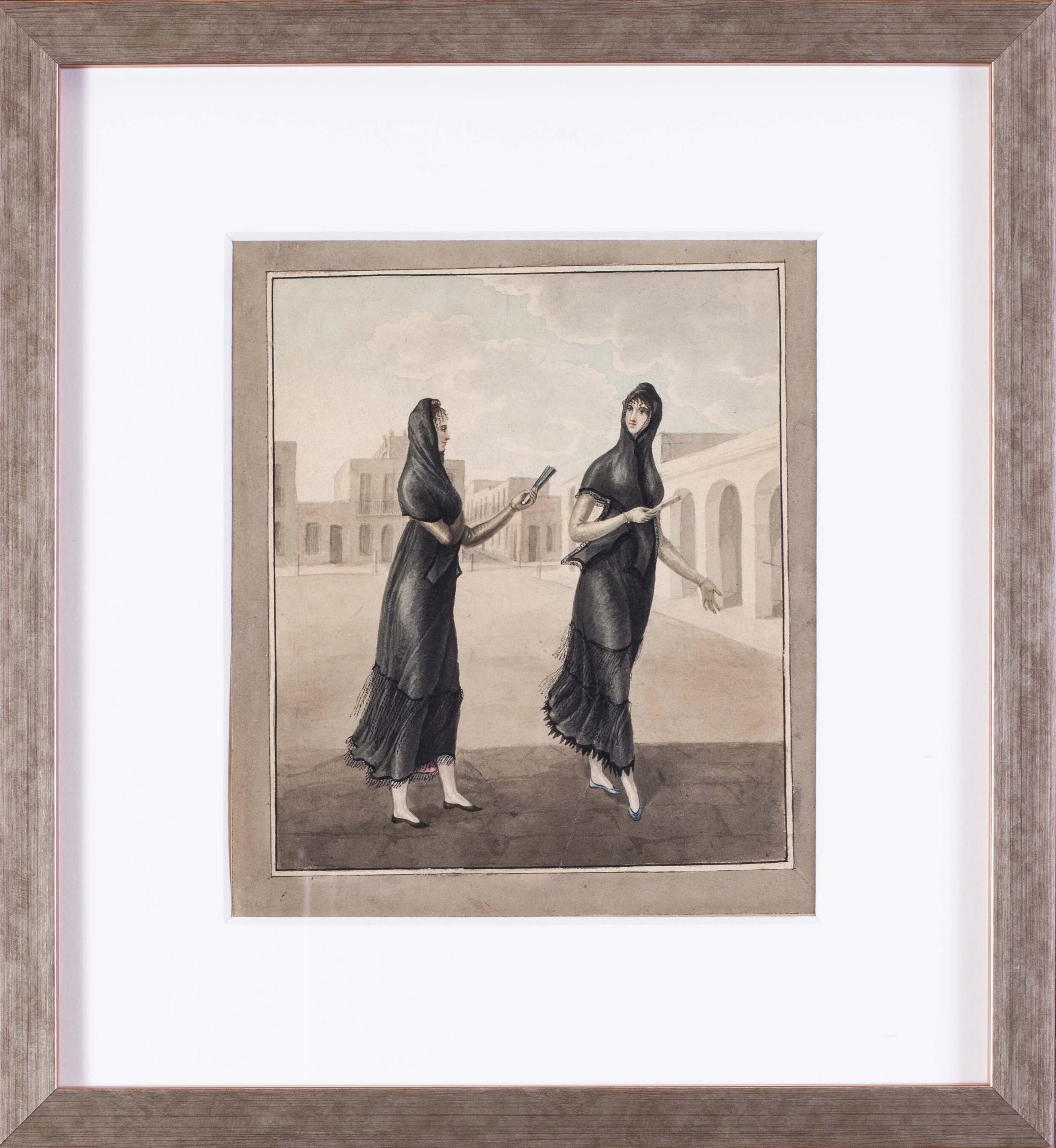Giovanni Boldini, 'Etude de femme au ruban noir '
Giovanni Boldini (Italian, 1842-1931)
Etude de femme au ruban noir
Signed with atelier stamp (lower left), further inscribed, signed and dated by Emilia Boldini (the artist’s wife) `no 77 le_ atelier Boldini. Emilia Boldini Carbona 1931’ (on the reverse)
Black crayon on paper
11.7/8 x 8.7/8 in. (30 x 22.5 cm.)
Giovanni Boldini was an Italian genre and portrait painter who lived and worked in Paris for most of his career. According to Time magazine, he was known as the "Master of Swish" because of his flowing style, exemplified by the confident strokes in this fine example.
Boldini was born in Ferrara, the son of a painter of religious subjects, and in 1862 went to Florence for six years to study and pursue painting. He only infrequently attended classes at the Academy of Fine Arts, but in Florence, met other realist painters known as the Macchiaioli, who were Italian precursors to Impressionism. Their influence is seen in Boldini's landscapes which show his spontaneous response to nature, although it is for his portraits that he became best known.
Moving to London, Boldini attained success as a portraitist, painting notable members of society including Lady Holland and the Duchess of Westminster. From 1872 he lived in Paris, where he became a friend of Edgar Degas. He became the most fashionable portrait painter in Paris in the late 19th century, with a dashing style of painting which echoed some Macchiaioli influences and the work of younger artists, such as John Singer Sargent and Paul Helleu.
Giovanni Boldini (Italian, 1842-1931)
Etude de femme au ruban noir
Signed with atelier stamp (lower left), further inscribed, signed and dated by Emilia Boldini (the artist’s wife) `no 77 le_ atelier Boldini. Emilia Boldini Carbona 1931’ (on the reverse)
Black crayon on paper
11.7/8 x 8.7/8 in. (30 x 22.5 cm.)
Giovanni Boldini was an Italian genre and portrait painter who lived and worked in Paris for most of his career. According to Time magazine, he was known as the "Master of Swish" because of his flowing style, exemplified by the confident strokes in this fine example.
Boldini was born in Ferrara, the son of a painter of religious subjects, and in 1862 went to Florence for six years to study and pursue painting. He only infrequently attended classes at the Academy of Fine Arts, but in Florence, met other realist painters known as the Macchiaioli, who were Italian precursors to Impressionism. Their influence is seen in Boldini's landscapes which show his spontaneous response to nature, although it is for his portraits that he became best known.
Moving to London, Boldini attained success as a portraitist, painting notable members of society including Lady Holland and the Duchess of Westminster. From 1872 he lived in Paris, where he became a friend of Edgar Degas. He became the most fashionable portrait painter in Paris in the late 19th century, with a dashing style of painting which echoed some Macchiaioli influences and the work of younger artists, such as John Singer Sargent and Paul Helleu.
Giovanni Boldini (Italian, 1842-1931)
Etude de femme au ruban noir
Signed with atelier stamp (lower left), further inscribed, signed and dated by Emilia Boldini (the artist’s wife) `no 77 le_ atelier Boldini. Emilia Boldini Carbona 1931’ (on the reverse)
Black crayon on paper
11.7/8 x 8.7/8 in. (30 x 22.5 cm.)
Giovanni Boldini was an Italian genre and portrait painter who lived and worked in Paris for most of his career. According to Time magazine, he was known as the "Master of Swish" because of his flowing style, exemplified by the confident strokes in this fine example.
Boldini was born in Ferrara, the son of a painter of religious subjects, and in 1862 went to Florence for six years to study and pursue painting. He only infrequently attended classes at the Academy of Fine Arts, but in Florence, met other realist painters known as the Macchiaioli, who were Italian precursors to Impressionism. Their influence is seen in Boldini's landscapes which show his spontaneous response to nature, although it is for his portraits that he became best known.
Moving to London, Boldini attained success as a portraitist, painting notable members of society including Lady Holland and the Duchess of Westminster. From 1872 he lived in Paris, where he became a friend of Edgar Degas. He became the most fashionable portrait painter in Paris in the late 19th century, with a dashing style of painting which echoed some Macchiaioli influences and the work of younger artists, such as John Singer Sargent and Paul Helleu.




















